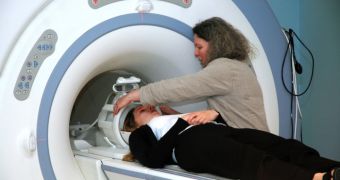At long last, after decades of assiduous efforts, scientists were able to come up with a sound model for the movement of the atoms within a magnetic field, which could prove to be a key element in developing enhanced, less claustrophobic MRI devices. The finding, which could provide improved control of magnetic resonance imaging (MRI) scanners and MRI diagnoses at larger resolutions, was made by an international team from Ohio State University in Columbus, US, and the France-based Centre National de la Recherche Scientifique, the Université d'Orléans, and the Université de Lyon.
The major discovery of the research group involves a physical feature called adiabaticity, usually used in order to control atoms in nuclear magnetic resonance (NMR) spectroscopy and MRI. "An adiabatic process can be visualized as one where a system is 'held tightly' and slowly dragged by a controlling force from one state to the next," said chemist Philip Grandinetti of Ohio State, cited by Eurekalert. "In a 'perfect' adiabatic process, the controlling force is moved infinitely slowly with the system's trajectory locked to the controlling force's trajectory."
In the case of MRIs, magnetism keeps the atoms of a patient's body in a steady state as the radio waves control the dragging force exerted on the atoms, which causes them to shift between states. NMR and MRI rely on the property called spin, because the atomic nuclei spin like tops. The examined object (or patient) is placed within a powerful magnetic field, which determines the spins to align with it, wobbling towards the direction of the gravitational field in a process called precession.
Measurements of the precession give an accurate 2D or 3D image of the internal structure of the object. Sometimes the nuclei need to be inverted in an adiabatic fashion, in order to detect, for example, a tumor in the case of a medical patient. Grandinetti and his team took into account the concept of super-adiabacity, which allows for depicting a less obvious behavior in the inversion of nuclei and the development of a mathematical algorithm predicting the nuclear paths to the target state.
This could lead to the development of MRI devices that would rule out the necessity of the dreaded patient-containing tube. "The problem is that these stray fields are highly inhomogeneous in nature, and to make up for this deficiency, researchers must control the dance of the spins in a way that compensates for this," explained Grandinetti. "And this is exactly where the more precise control of super-adiabaticity may prove to be a revolution in MRI. Who knows, maybe a few years from now, you will be casually sitting next to the intimidating device, without the need for sedation?"

 14 DAY TRIAL //
14 DAY TRIAL //